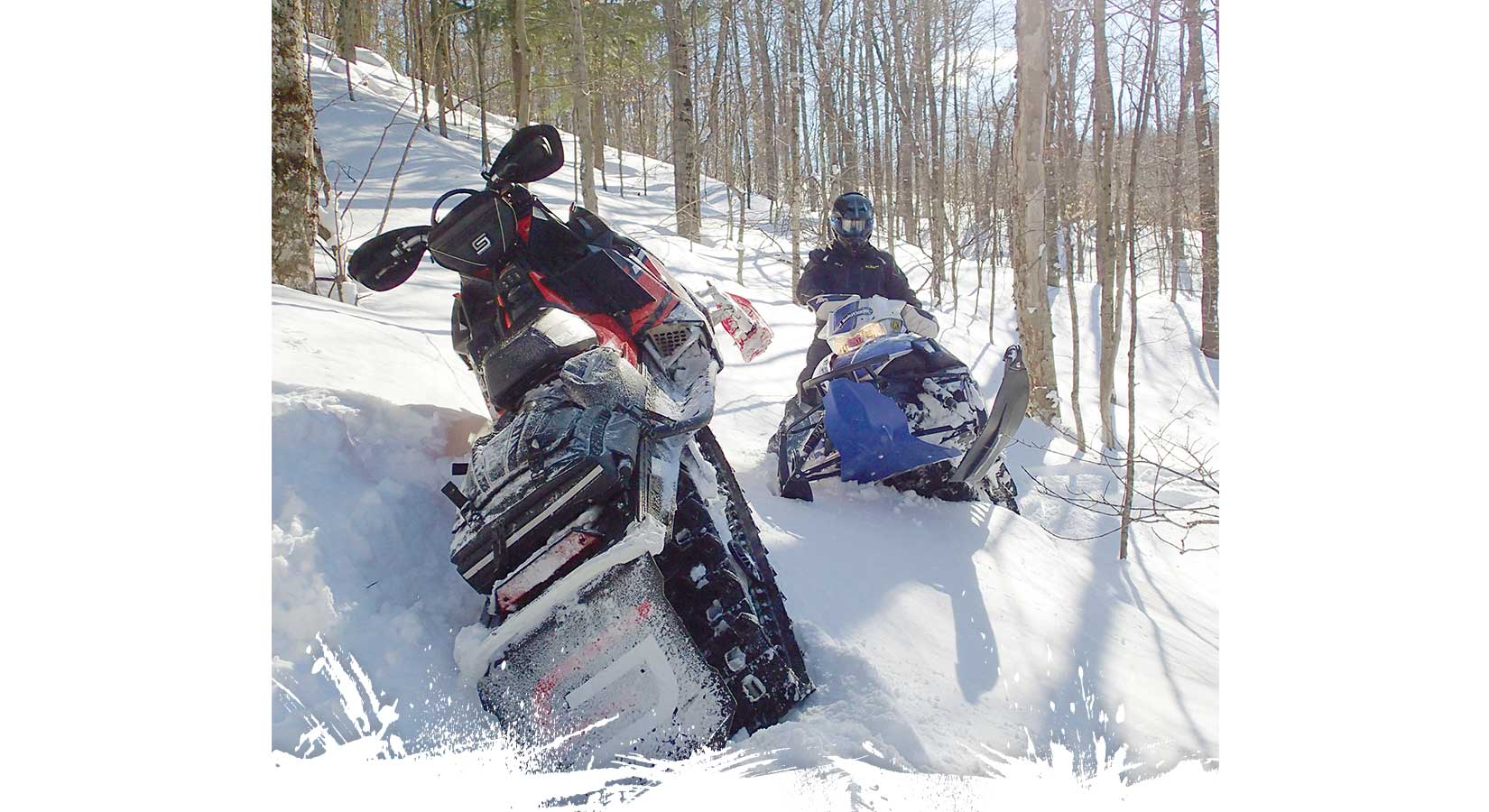While many riders will start getting news of their snow check coming in, and others will start thinking of necessities for their current machine, all of us die-hards will be planning for the season ahead. But if the coming season has you considering a new way of exploring, maybe you are considering prepping your sled for the backcountry but aren’t sure exactly what you need.
Let’s start at the beginning for those looking to buy new machines…
Do your research. If you are purchasing a new sled for this new style of riding, all four manufacturers have machines that fit into this category but that doesn’t mean they’ll be the right sled for you. Here’s where doing your research can end up saving you some money in the long run. There is nothing worse than picking the wrong sled for your riding style. Consider how much trail you will be riding to get to the backcountry, if a crossover sled might be a better option, and even consider what your friends are riding so you know that you won’t be the only one looking to find the deepest snow.
Two-Stroke or Four-Stroke. While there could be a great debate about which is better, for backcountry riding two-stroke machines will give you the light maneuverability that you will want when playing around in terrain.
Engine Class. While some may disagree, I always go for the 800cc class engine for my machines. Unless you’re planning on just casually cruising logging roads, the 800cc will take you where you need to go. In this case, the old saying applies: “There’s no replacement for displacement”.
Track Length. This is one of those topics that can start fights on the internet like nothing else but my suggestion is to be honest with yourself about how you’re going to ride the sled. If you choose to go with a 150+” track and then end up riding trails more than you thought you’re going to be miserable. If you’re just getting started in the whole “Off Trail” riding style you may find yourself happier on a 141” or 146” crossover sled during the learning process.
Track Lug Height. Some sled models give you options on the height of the lug coming on the machine you’re going to buy. 2”-2.6” is the range I generally stick to when picking a track for my newest sled. 3” is fine if you’re going to strictly ride in the steepest and deepest all the time. Which track you choose will depend on the conditions you will typically be riding in.
If you’ve purchased your machine the next things to consider are protection and storage! Today’s sleds come from the factory set up for their intended purpose, however, they aren’t set up for YOU and that’s where accessories come into play.
Protection. In my opinion, this is a NECESSITY. Off-trail riders know that you should protect anything and everything on your machine. Although sleds are coming from the factory with many decent options, they still have weak points that need to be addressed.
Front End Protection. A stronger front bumper is going to protect that very expensive pipe lurking just under the plastic nose cone and I’ve found that replacing a bumper is a lot cheaper than replacing the hood, side panels, or the pipe. Factory bumpers do not provide the type of protection I need when I go riding, plain and simple.
Bottom Protection. As a backcountry rider that has found a stump or two in my travels, I’ve learned some very valuable lessons, one being, PUT A SKID PLATE ON IT! Protecting the bottom of the sled is critical when playing off-trail. I prefer a full skid plate made out of UHMW (plastic) because it will absorb part of an impact and provide a smooth, slippery surface to deflect obstacles hidden under the snow. Aluminum is strong but can dent, and in some cases, will gouge causing your machine to come to an abrupt stop throwing you into the bars. Depending on the machine you have, there could be additional protection pieces you can add to the bottom of the sled to protect brake rotors, belt drives, and chaincases.
Hand Protection. Lastly, if you spend a lot of time in the trees your hands are going to appreciate a quality set of handguards. Those little whips sting when they’re frozen. Some handguards even offer a level of wind protection to keep your hands a little warmer when riding. There are many options out there so find the ones that best fit your riding style.
Storage. When you head out for a day in the backcountry, it’s important to be prepared, and adding storage to your sled will allow you to take everything you might need. Although I take everything short of the kitchen sink, the minimum that you need space for is a small tool kit, plenty of water, spare gloves and goggles, lunch/snacks for the day, and a basic survival or first aid kit. Additional storage is up to the rider but you need to be prepared for whatever the day may bring.
Let’s be honest, everyone can go nuts with adding accessories to their sled and each rider will have different opinions on what they think you need for your backcountry adventure. The truth is, once you get out and ride a time or two, you will know what works for you or what you still need. Each ride tends to bring different conditions, changing terrain, and new things to purchase to make the next trip even better than the last.
Until the snow flies, let’s pray for a good winter.
